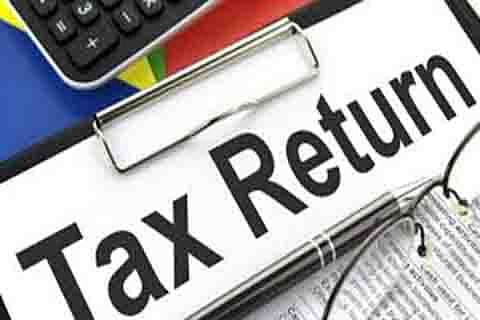Income Tax Refund Login: The excess tax can be claimed as a refund by filing your Income-tax return
Read More: ITR Filing: What Is Form 16? Is It Necessary To File Income Tax Return? All You Need To Know
Individuals or businesses can receive a tax refund if they have paid more taxes than they owe for a particular financial year. A tax refund serves as a silver lining in the realm of finance, offering individuals and businesses respite when they’ve paid more taxes than their actual obligations for a given financial year. This process embodies the essence of fairness within taxation systems, ensuring that taxpayers aren’t burdened beyond their due contributions.
For individuals, a tax refund can provide a welcomed financial boost, offering an opportunity for savings, investments, or simply easing economic strain. Similarly, for businesses, it can signify enhanced liquidity, empowering them to allocate resources towards growth, innovation, or debt repayment.
Why Do You Need To Claim Tax Refunds?
Amounts paid as advance tax and withheld in the form of TDS or collected in the form of TCS will take the character of your tax due only on completion of self-assessment of your income. This self-assessment is intimated to the Income Tax Department by way of filing the return of income. Only then does the government assume rights over the taxes paid by you.
Filing of returns is critical for this process and, hence, has been made mandatory. Failure will attract a levy of penalties.
How To Get A Tax Refund?
The excess tax can be claimed as a refund by filing your Income-tax return. It will be refunded to you by crediting it to your bank account through an ECS transfer. The department has been making efforts to settle refund claims as soon as possible.
Individuals need to file their income tax returns for the relevant assessment year by the due date specified by the Income Tax Department. The due date is typically July 31st of the assessment year, but it can vary.
After filing the income tax return, the Income Tax Department verifies the information provided and processes the return. This involves checking the calculations, deductions, and exemptions claimed by the taxpayer.
The department assesses the taxpayer’s liability based on the information provided in the return. If it is found that the taxpayer has paid more taxes than required after considering deductions, exemptions, and credits, a refund is issued.
Read More: I-T department sets April 30 deadline for approving refunds: Report
Once the assessment is completed and it is determined that the taxpayer is eligible for a refund, the Income Tax Department initiates the refund process. Refunds are usually issued through direct bank transfer (Electronic Clearing Service or NEFT) to the taxpayer’s bank account.
In some cases, the taxpayer might receive communication from the Income Tax Department seeking clarification or additional information before processing the refund. It’s essential to respond to such communications promptly to avoid delays in refund processing.
Once the refund is processed, the taxpayer receives the amount directly in their bank account. The refund amount includes any interest payable on the excess taxes paid, calculated from the date of filing the return to the date of refund.
Taxpayers can track the status of their tax refund online through the Income Tax Department’s website or the Tax Information Network (TIN). They can use their Permanent Account Number (PAN) to check the status of their refund.
Income Tax Refund Status: Step-By-Step Guide To Check Your Tax Refund Status Online
Earlier, taxpayers needed to check the refund status on the TIN-NSDL website. You can still check it from the TIN-NSDL website as well. However, now, a new functionality was launched on the income tax portal (IT portal) itself, which allows users to check their refund status directly from the portal itself.
A Step-By-Step Guide To Check Income Tax Refund Status:
Step 1: Visit the E-filing portal.
Step 2: Scroll down the ‘Quick Links’ section till you see ‘Know Your Refund Status’. Click on it.
Step 3: Fill in your PAN number, assessment year (2023-24 for the current year), and mobile number.
Step 4: You will get an OTP. Fill in the OTP in the given place.
Now, it will show the income tax refund status.
If there is some issue in your ITR bank details, it will show: ‘No Records Found, please check your E-filing processing status by navigating through e-File – > Income Tax Returns – > View Filed Returns‘.
ITR Filing Last Date
The deadline for filing your ITR for the assessment year 2024-25 is July 31.



































